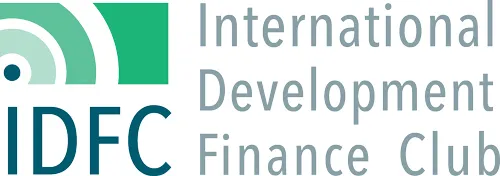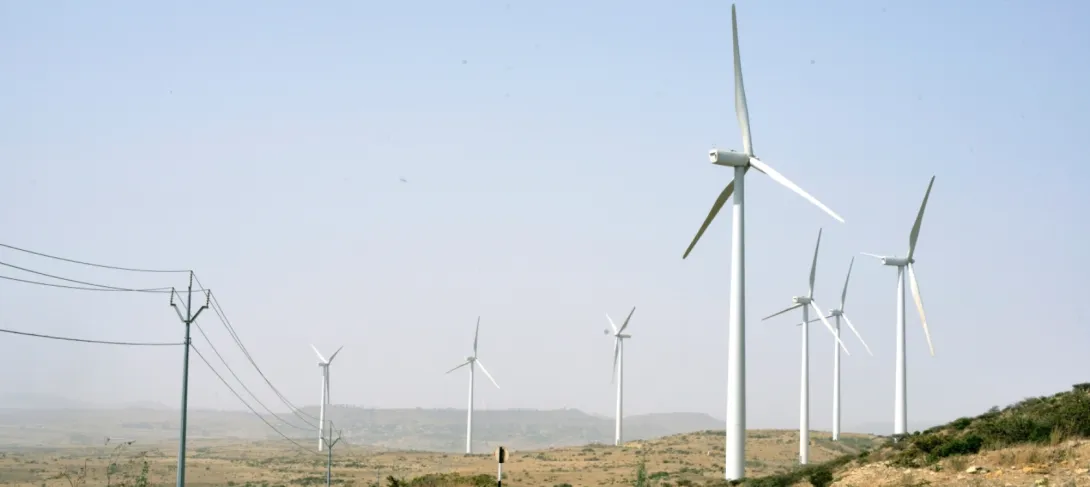Share the page
IDFC

The International Development Finance Club (IDFC) is a network of 27 national, regional and bilateral development banks. AFD was one of its founding members in 2011 and has been chairing the organization since October 2017. The IDFC members, working together to implement the Sustainable Development Goals & the Paris Agreement Agendas, join forces as a platform to promote & leverage Sustainable Development Investment worldwide.

A leading role
IDFC plays a leading role in making Public Development Banks key actors for sustainable development. Their collective objective is to fulfill the SDGs and the Paris Agreement objectives while responding to the Covid-19 crisis. IDFC was a co-organizer of the Finance in Common Summit in November 2020, which gathered all the Public Development Banks for the first time.
What is IDFC?
AFD was one of the founding members of IDFC in 2011. This network brings together 27 national, regional and bilateral development banks, including TSKB (Turkey), PT SMI (Indonesia), CDG (Morocco), Bancoldex (Colombia), CDB (China), KfW (Germany) and JICA (Japan).
What makes IDFC special, is that the vast majority of its members are institutions from developing and emerging countries.
Unparalleled capacity for action
With US$ 4 trillion in accumulated assets and more than US$ 600 billion in annual financing, IDFC is the top provider of public funds for development.
IDFC represents five times the size of all the multilateral banks put together.
IDFC members join forces as a platform to speak with one voice on principal international discussions on development and climate financing. IDFC thus fully embodies the form of partnership action that stems from the major international commitments of 2015, including the important UN conference on Financing for Development in Addis Ababa.
The development banks in developing and emerging countries combine the advantages inherent to development banks with those related to their local presence, and they enjoy considerable technical and financial capacities. That’s why they’ve been called on to play a leading role in achieving the Sustainable Development Goals (SDGs) and in implementing the Paris Climate Agreement.
What’s special about IDFC is that the vast majority of its members are institutions from developing and emerging countries.
A shared vision
The IDFC members also share common goals: that of consolidating the position of these banks as the third pillar of development financing—alongside the multilateral banks and the private sector—and that of increasing their contribution to financing more low-carbon and resilient paths of development.
Climate objective

Each year, IDFC commits an average of US$ 150 billion to “green” and climate financing, making it the foremost global public donor for energy and ecological transitions.
IDFC has also undertaken work to harmonize financial actors’ tools and practices, to better take into account climate issues in development financing. In concrete terms, common methods of climate-financing accounting have been developed and are now being used by many financial actors.
Climate Commitments
At the Finance in Common Summit the IDFC, through the voice of its co-chair, Patrick Dlamini, CEO of the Development Bank of Southern Africa (DBSA), announced the Club’s new commitments to fight climate change.
IDFC reiterated its past commitments, and presented new measures. They include tools to align policies and practices with the Paris Agreement, take into account the consideration of social issues, particularly during the Covid-19 pandemic, as well as the climate-biodiversity nexus. The Club also announced several milestones such as the creation of the IDFC Climate Facility launched during COP25, and the strategic partnership with the Green Climate Fund (GCF).
At the Climate Action Summit in New York in 2019, IDFC also pledged to deploy more than US$ 1 billion in climate finance by 2025, an increasing portion of which will be allocated to adaptation.
At the first One Planet Summit in 2017, IDFC members committed to align with the Paris Agreement process, finance the trajectories and actions set by the countries, and become a platform to mobilize private finance to move towards fulfilling the SDGs and better protection of the climate. IDFC took another step almost 1 year later, at COP24, by publishing a position paper on aligning with the Paris Agreement.
In 2015, IDFC joined forces with the MDBs with the publication of “Lesson Learned : from three years of implementing the MDB-IDFC common principles for climate change adaptation and finance tracking.”
AFD wants to make the most of its term as chair of the IDFC, by continuing to strengthen climate financing in the network, especially in the context of the Paris Agreement.
The 27 members

Europe
- Black Sea Trade and Development Bank (BSTDB) - Greece
- Croatian Bank for Reconstruction and Development (HBOR) - Croatia
- Agence Française de Développement (AFD) - France
- KfW Bankengruppe - Germany
- Cassa depositi e prestiti (CDP) - Italia
- State Development Corporation VEB.RF - Russia
- Industrial Development Bank of Turkey (TSKB) - Turkey
- The International Investment Bank (IIB) - Hungary
Africa
- African Finance Corporation (AFC) - Nigeria
- The Eastern and Southern African Trade and Development Bank (TDB) - Burundi & Mauritius
- Caisse de Dépôt et de Gestion (CDG) - Morocco
- Development Bank of Southern Africa (DBSA) - South Africa
- Banque Ouest Africaine de Développement (BOAD) - Togo
Asia & Middle East
- China Development Bank (CDB) - China
- Small Industries Development Bank of India (SIDBI) - India
- Japan International Cooperation Agency (JICA) - Japan
- The Korea Development Bank (KDB) - South Korea
- PT Sarana Multi Infrastruktur (PT SMI) - Indonesia
- Islamic Corporation for the Development of the Private Sector (ICD) - Saudi Arabia
Central, South America and Caribbean Region
- Banco Nacional de Desenvolvimento Econômico e Social (BNDES) - Brazil
- Development Bank of Latin America (CAF)
- Central American Bank for Economic Integration (BCIE/CABEI)
- Banco Estado (BE) - Chile
- Bancoldex S.A. - Colombia
- Nacional Financiera (NAFIN) - Mexico
- Corporación Financiera de Desarrollo S.A. (COFIDE) - Perù
- Banco de Inversión y Comercio Exterior S.A. (BICE) - Argentina
How does it work?
IDFC is structured around its chair and Steering committee. This committee, under the lead of the IDFC Chairperson, currently the AFD CEO, Rémy Rioux, is composed of the Brazilian development bank (BNDES), the Andean Development Corporation – Development Bank of Latin America (CAF), The China Development Bank (CDB), Caisse de dépôts et gestion of Morocco (CDG), the Development Bank of Southern Africa (DBSA), the Islamic Corporation for the Development of the Private Sector (ICD), and the Japan International Cooperation Agency (JICA) and the German development bank (KfW) and the Turkish Industrial Development Bank (TSKB).
IDFC meets annually to take collective action to meet the major ecological and development challenges. Its members also exchange best practices in working groups aligned with the main SDGs, with a focus on climate, gender, biodiversity and cooperation for development.



